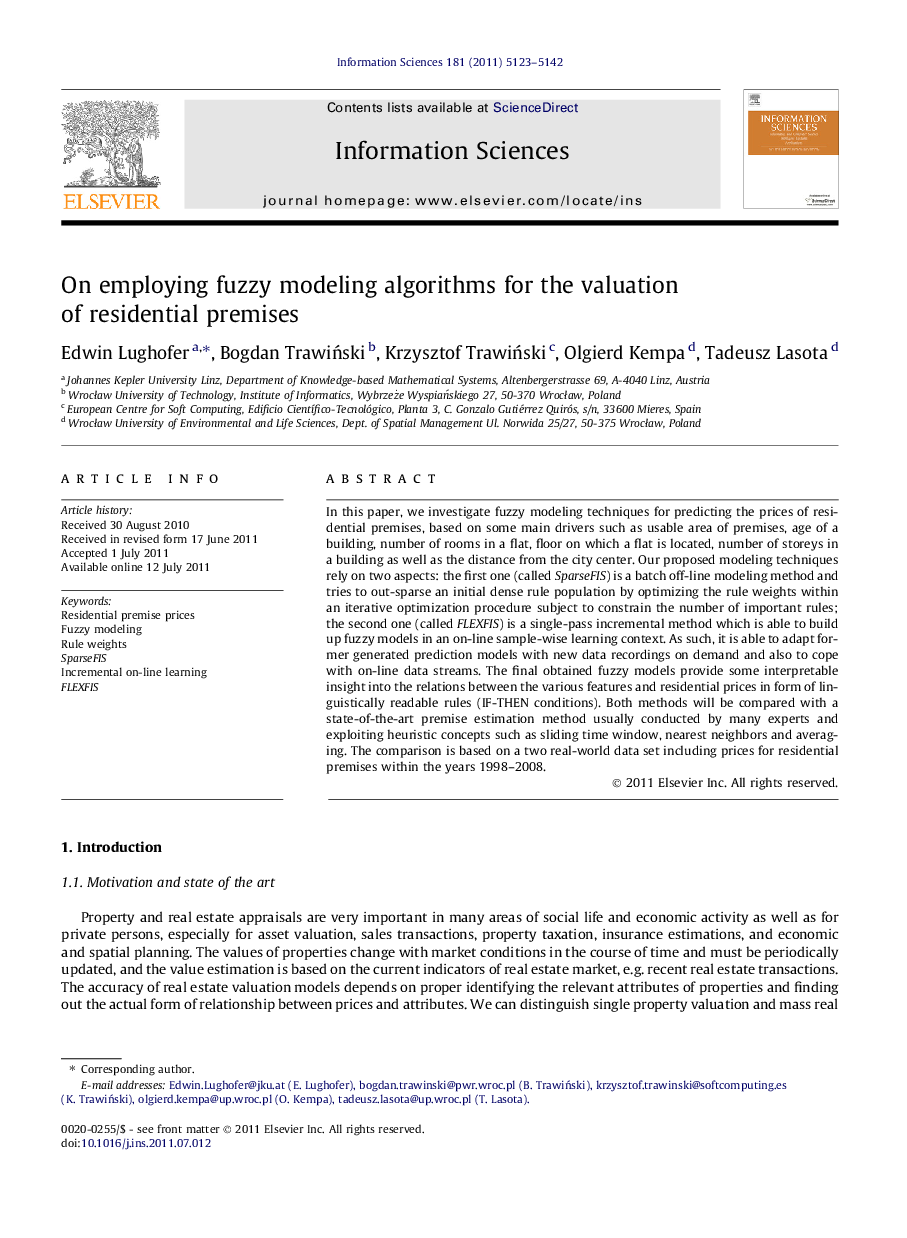| Article ID | Journal | Published Year | Pages | File Type |
|---|---|---|---|---|
| 393916 | Information Sciences | 2011 | 20 Pages |
In this paper, we investigate fuzzy modeling techniques for predicting the prices of residential premises, based on some main drivers such as usable area of premises, age of a building, number of rooms in a flat, floor on which a flat is located, number of storeys in a building as well as the distance from the city center. Our proposed modeling techniques rely on two aspects: the first one (called SparseFIS) is a batch off-line modeling method and tries to out-sparse an initial dense rule population by optimizing the rule weights within an iterative optimization procedure subject to constrain the number of important rules; the second one (called FLEXFIS) is a single-pass incremental method which is able to build up fuzzy models in an on-line sample-wise learning context. As such, it is able to adapt former generated prediction models with new data recordings on demand and also to cope with on-line data streams. The final obtained fuzzy models provide some interpretable insight into the relations between the various features and residential prices in form of linguistically readable rules (IF-THEN conditions). Both methods will be compared with a state-of-the-art premise estimation method usually conducted by many experts and exploiting heuristic concepts such as sliding time window, nearest neighbors and averaging. The comparison is based on a two real-world data set including prices for residential premises within the years 1998–2008.
